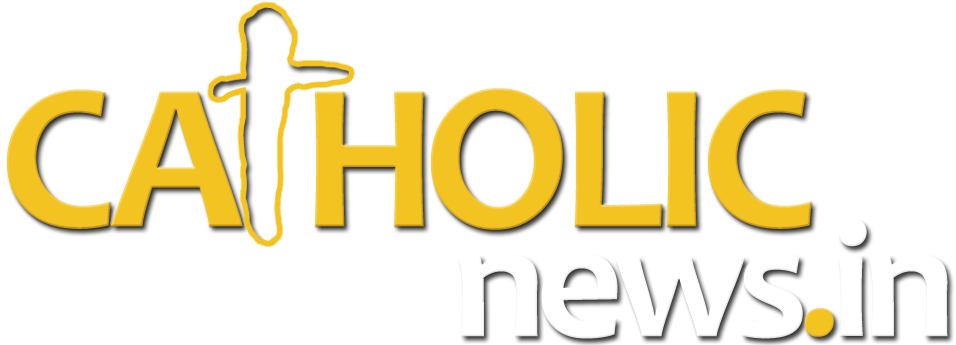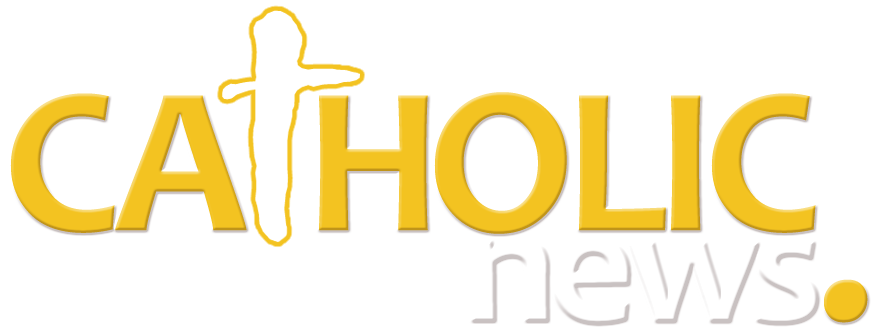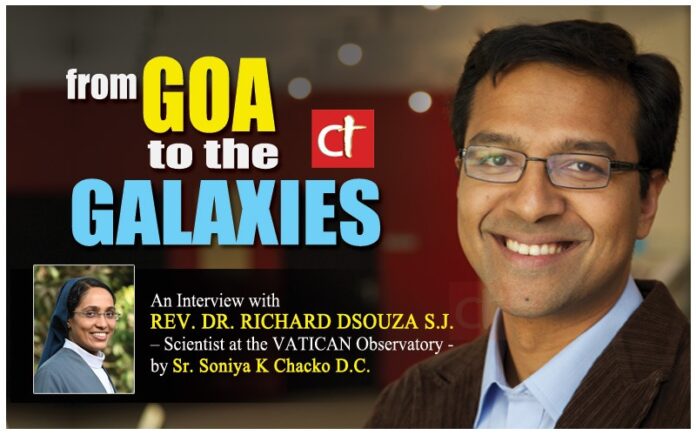Vocation is a special call from God to carry out a mission. Richard Dsouza was a
curious boy from his childhood, eyes radiant with curiosity about the wonders of the
universe. The young Richard nursed his dream to be a scientist. Being passionate for astronomy, he accepted the call of God to be a Catholic priest in the Jesuit Order.
Nothing hindered him from following the Lord in the Society of Jesus, as
St Paul writes to Romans: “Who will separate us from the love of Christ? Will affliction or distress or persecution or famine or nakedness or peril or sword? For I am convinced that neither death, nor life, nor angels, nor rulers, nor things present, nor things to come, nor powers, nor height, nor depth, nor anything else in all creation will be able to separate us from the love of God in Christ Jesus our Lord” (Rom. 8, 35-38).
While in priestly formation, his only brother died of cerebral malaria. His parents would have liked him to come back from the seminary, but allowed him to continue his journey. The loss of his brother made him only stronger in his faith and his desire to follow the Lord. Richard continued to pursue his dream and became a Jesuit Priest in the province of Goa on 28 December 2011. Before starting his philosophical studies specific to the priesthood, he was sent to the University of Heidelberg, Germany, for a Postgraduate degree in Physics. After having been ordained a priest, he continued his studies in Astronomy at the Max Planck Institute, Munich, Germany, from where he obtained his Doctorate in Astronomy. Later he carried on with his post-doctoral research at the University of Michigan, USA. Now, as a Priest-Scientist working at the Vatican Observatory, he is one among the twelve scientists appointed by Rome.
Fr Richard’s mother Mrs. Mary Dsouza says only a few words about her son but it
contains a world of things about him; “Richie was so fascinated about the universe from
his childhood. He is a very humble and fervent priest. At the time of his Ordination, we
felt so elevated to heavenly joy. Our first son has gone to God and we wanted Richard
to be with us, but he was very firm in his call to the priesthood. Today we are happy that he does great things for the Church as a priest and for the world as a scientist”.
Fr. Richard is a happy and humble priest who is so fascinated about the universe. He is
grateful to the Jesuit Order that made him a Scientist for the Church. He celebrates his
life as a priest as well as a Scientist. At present, he works as an astronomer in the 130-
year-old Vatican Observatory, Rome. He had many ‘Eureka’ moments, especially in the
discovery of Galaxy M32p with Dr. Eric Bell. Conversing with Fr Richard, we will share
his view that we are not alone in this universe. Watching the universe certainly
reveals how magnificent God’s Creation is!
1. Could you please introduce yourself, and your religious Congregation?
I am Fr Richard D’Souza SJ, and hail from Goa, India. I belong to the Goa Province
of the Society of Jesus. I currently work as a staff astronomer at the Vatican
Observatory at Castel Gandolfo, Rome. From July of this year, I am also the superior
of the Jesuit community attached to the Observatory.
2. Could you please share your vocation story?
While growing up, I attended St Britto High School, Mapusa, Goa, a Jesuit school
from the 8th to the 10th grade. It is there that I got to know the Jesuits, and felt attracted to their way of life. After I finished my higher secondary school, I joined the Jesuit novitiate in Belgaum, Karnataka.
3. As a child, were you so fond of stars and the moon? From when did you start being interested in astronomy?
I was always interested in the sciences and engineering. When I joined the Jesuits, I
read a lot about their work in astronomy and in the sciences. During my formation, I
was asked by my Jesuit superiors to specialize in astronomy and from there (then), my
interest in astronomy grew.
4. When did you join the Society of Jesus? And when were you ordained a priest?
I joined the Society of Jesus in 1996 in Belgaum, India. I was ordained a priest in
December of 2011.
5. Could you please tell something about your family?
My parents live in Goa, and I am presently their only child. I had a brother, who died
shortly after I joined the Jesuit novitiate. I come from a rather simple family. My
parents used to work in Kuwait, and after the first gulf war, we returned as refugees
and settled down back in Goa. I was 12 at the time we returned. I then spent the rest
of my childhood in Goa – I came to know the Jesuits there.
6. How happy and fulfilled are you as a scientist-priest?
Although my work is presently full-time research in astronomy, I often help out at the
local Italian parish on Sundays, and celebrate the Holy Mass there. During my PhD, I
always enjoyed preaching and celebrating Mass for the public. After my ordination, I
started a number of courses on theology and scripture for the laity, and I enjoyed
doing this work. Today, my vocation as a priest is to reach out to a new particular
type of audience – that is, the scientific community, a community which the Church at
times has difficulty in reaching out too.
7. When did you complete your studies as a priest and as a scientist?
I did most of my priestly studies in Pune, India, completing them in 2011. On the
another hand, I started studying physics and astronomy after joining the Society of
Jesus. Even before starting my philosophy studies, I completed a master’s degree
in Physics at the University of Heidelberg, Germany. Eight years later, after
completing my priestly studies, I resumed my scientific studies, completing a PhD in astronomy at the Max Planck Institute in Astronomy in Munich, Germany.
8. Is there any reason to choose Germany to study Astrophysics even when we have some of the best research centers in India like IIA, Tata, etc?
For a scientific career, it is also good to get some experience in a foreign institution.
Moreover, Indian institutions were not very advanced in optical astronomy at that
time – concentrating more on theoretical work as well as radio astronomy.
9. What is the role of Max Planck Institute for Astrophysics in your life? Could you
please explain about your research subject – Astrophysics?
The Max Planck Society has a number of institutes in various disciplines – including
at least four of them in astronomy and cosmology. I had the experience of working at
two of them. The Max Planck Institute for Astronomy in Heidelberg, and then the
Max-Planck Institute for Astrophysics in Munich, Germany. These are premier
institutes of research, attracting the best scientists in the world. They gave me a lot of
exposure to the international field of research. I learned a lot from spending my time
in these institutes. My field of research is the formation and evolution of galaxies. In
particular, I try to infer the history of galaxies like our Milky Way.
10. How do you balance your call to priesthood and Science? Do they complement each other?
For me both of them go hand-in-hand. This is because I have been explicitly asked by
my superiors to study astronomy, to be a scientist and to work at the Observatory as a
Jesuit priest. Working at the Vatican Observatory is part of the mission of the Church
– to preach the Gospel and the Kingdom of God – even within the scientific and
secular domains. On the other hand, as a Catholic, I firmly believe that God has
created the universe and is present in it. The more I discover the Universe as a
scientist, the more I give praise and glory to its Creator.
11. How did you get to Vatican Observatory? How long are you there?
During my master’s studies, I was approached by the Vatican Observatory to train to
be an astronomer and to join their staff. I have been here at the Observatory in Rome
for the last three years.
12. There are many priest-scientists in the Catholic Church who have contributed much to the world. Today you are one among them. How do you feel about this vocation?
I feel proud to belong to such an elite group. I hope I can contribute as much as they
did and be of service to the Church.
13. What are your services and daily routine at the Vatican observatory?
My main job at the Vatican observatory is doing astronomical research. A large part
of my day is spent doing research, writing papers, and presenting these results to the
scientific community. Besides strict astronomical research, we are also involved in
giving public talks – explaining to the world and to the Church – that science and
religion can go together.
14. The field explores topics such as the birth, life, and death of stars, planets, galaxies, nebulae, and other objects in the universe. How do you compare human existence to the other realities of the universe?
I think some of the basic existential questions of humankind form the basis of various
fields in astronomy are: A) Where do we come from? B) Where are we going? and C)
Are we alone in the Universe?
The first question is concerned with the origin of the Universe, the galaxies, the stars and the planets. My field of research falls under the first question, but the first question encompasses a majority of research in astronomy.
The second question is the field of study of the future of the universe. Since the future
of the universe depends on its composition, it is important to study the nature of dark
energy – a component of the universe which may be responsible for the accelerated
expansion of the universe.
The third question focuses on the search for extraterrestrial life. This includes the search for extra-solar planets, and their composition, as well as searching evidence of how these planets could support forms of life.
15. How many priest-scientists are working with you there in the Vatican? Are there only priests?
We are about 13 priests and brothers who are working as astronomers for the Vatican
Observatory.
16. The book of Psalm sings, " the heavens are telling the glory of God" As you go on with research, do you feel that you are also joining them in singing the praises of God?
My work is to understand how nature works. The more I discover about nature, the
more I am able to give praise to God, who created the world in this wonderful and
complicated way.
17. India has given many contributions to the world in Astronomy. We are so proud to have you as one among the Indian scientists. Do you have a chance to go to space? Are you interested in going to space? Will that contribute to your studies?
My work does not involve going to space. I use various space-based telescopes, but
this does not require me to go to space.
18. What are your contributions as a scientist to the Church and the world?
One of my contributions to the field of science is to understand how to decipher the
merger history of galaxies. We know that galaxies grow by creating new
stars but also by merging with other smaller galaxies due to gravity. In order to
understand how galaxies grow, astronomers would like to reconstruct the merger
history of a galaxy – namely, to decipher which smaller galaxies merged with the
larger galaxy. This is quite a difficult problem, especially for external galaxies like the
Milky Way. Through my research, I was able to show how it was possible to
constrain the mass/size of the largest galaxy which merged with the parent galaxy. This was a huge step forward for the field.
By doing research in astronomy and by being a Jesuit priest, I am able to bear witness
to the fact that science and religion go together. A lot of my efforts are invested into
making known the fact that the Church has a rich tradition of Catholic scientists, and
that science and faith are compatible.
19. What is M32p which you have discovered with Eric Bell in 2018?
In 2018, along with Eric Bell, I was able to demonstrate that our nearest galactic
neighbour, the Andromeda galaxy – had eaten up (merged) with a galaxy that was
half the size of the Milky Way, and that its remnant survives today as another smaller
a galaxy called M32. We named the original galaxy which was almost completely
destroyed as M32p.
20. Father Richard, I could find 23 projects in the website called https://cornell.edu/
Every time we complete a project and publish a paper, we put it up on an archive
which is publicly available. In my career, I have been involved in a number of
astronomical projects in the last few years. Most of them are directed to studying the
accretion history of galaxies.
21. How do you feel about the stand of the Church on matters of Faith, Religion, and Science?
I think the Church has a very balanced view on faith and science. The various
documents of the Church as well as some of the letters of the Holy Fathers (especially
those from John Paul II) speak of the rich value of how science and faith can work
together.
22. Today, as you read the book of Genesis from the Holy Bible, how do you feel? Since you have seen the stars closer and the universe better than others have, what are your thoughts?
The Book of Genesis is full of rich theological insights on how God created the universe and the relationship of humankind with God, the world and itself. In fact, the first few chapters of the Book of Genesis are most dense in theological insights that can be found anywhere in the Bible. The central insight from the Book of Genesis is that God created the world, and that created things cannot and should not be worshipped as gods. Today, science holds the theory that the universe was created in a Big Bang. Now this is a very catholic idea. It was Fr George Lemaitre, a Belgian Catholic priest, who first suggested this idea – after studying the equations of theory of relativity according to Einstein and applying them to the Universe. He realised that if the universe was expanding, then it was smaller in the past. If we would extrapolate back to the extreme past, then the universe would get smaller and denser, and originate from a single point – which was then given the name the Big Bang. The Big Bang is a very Catholic idea because it underlies the fact that the universe had a beginning, and as a consequence a Creator.
23. Can you give a message to the youth of today?
To the youth of today, I would suggest two things: First, dream big. It is only by
dreaming big, that we can reach somewhere. Second, don’t look or settle for easy
answers. Most problems in life require deep reflection and research. Make it your life
mission to search for the truth, to always question, and not to settle for ready-made
answers.
Sr Soniya K Chacko DC
Daughter of Charity of St Vincent de Paul



